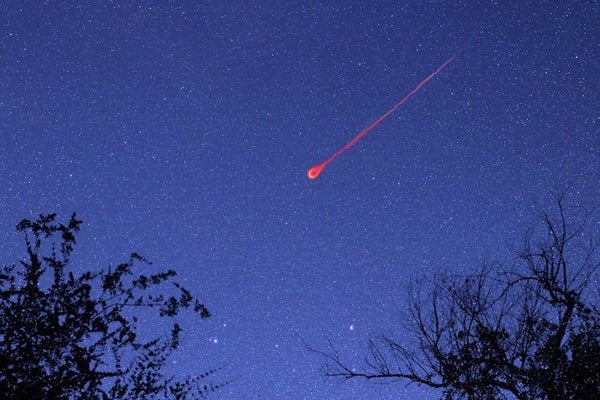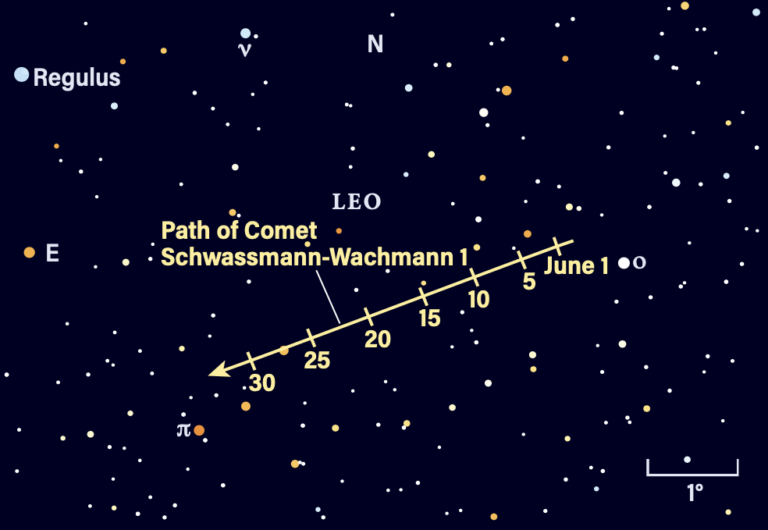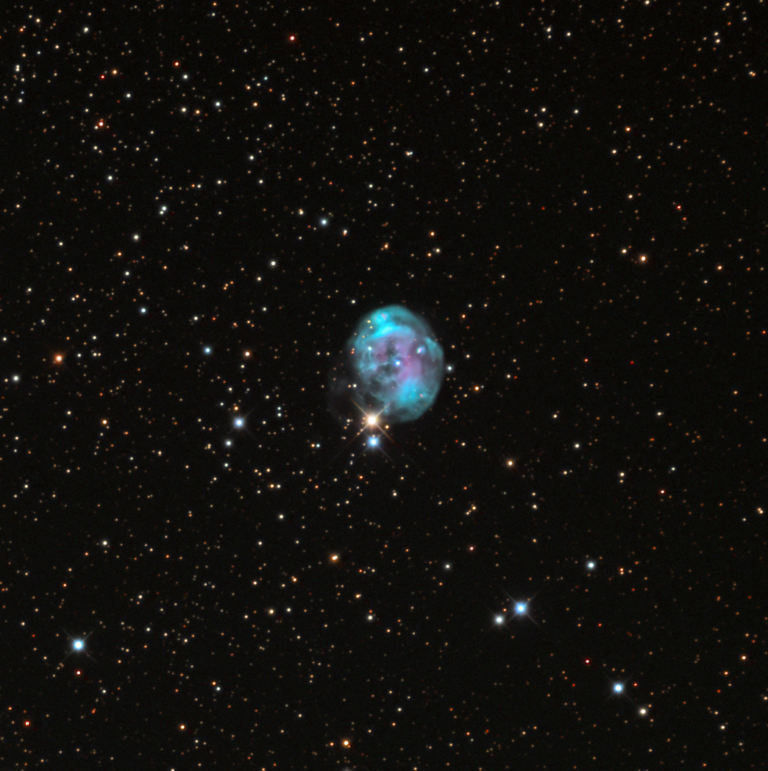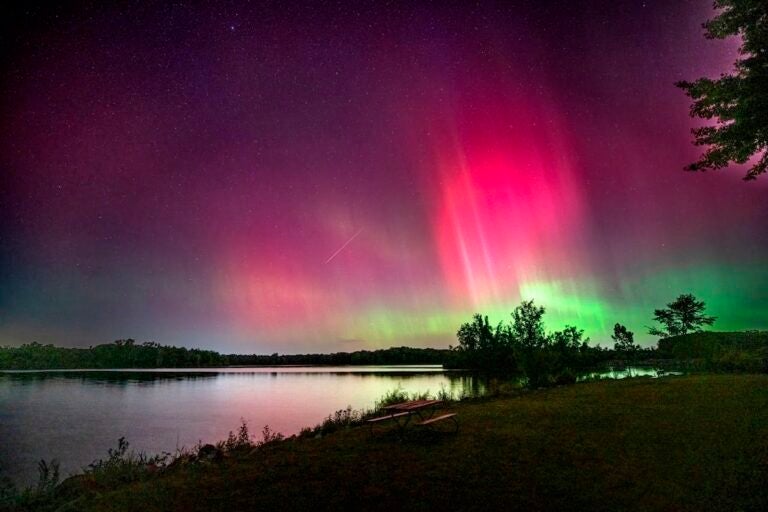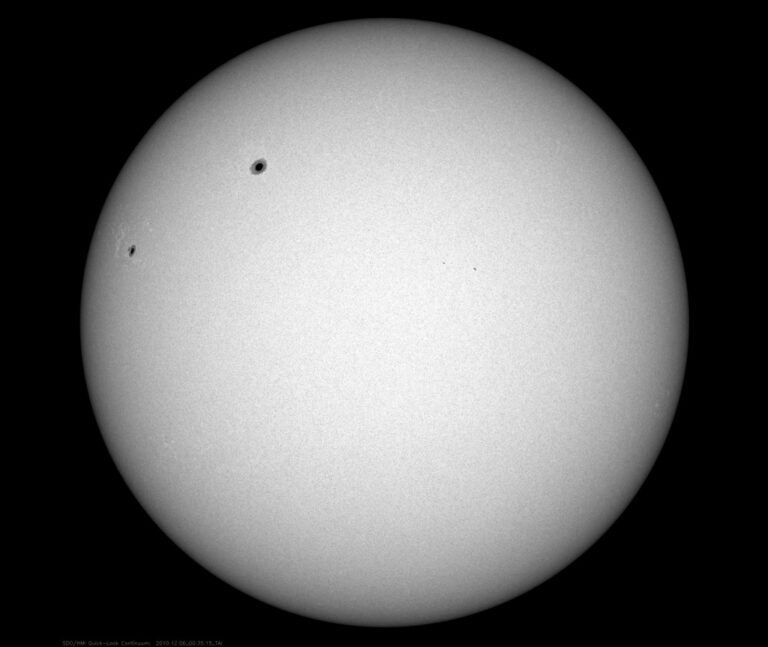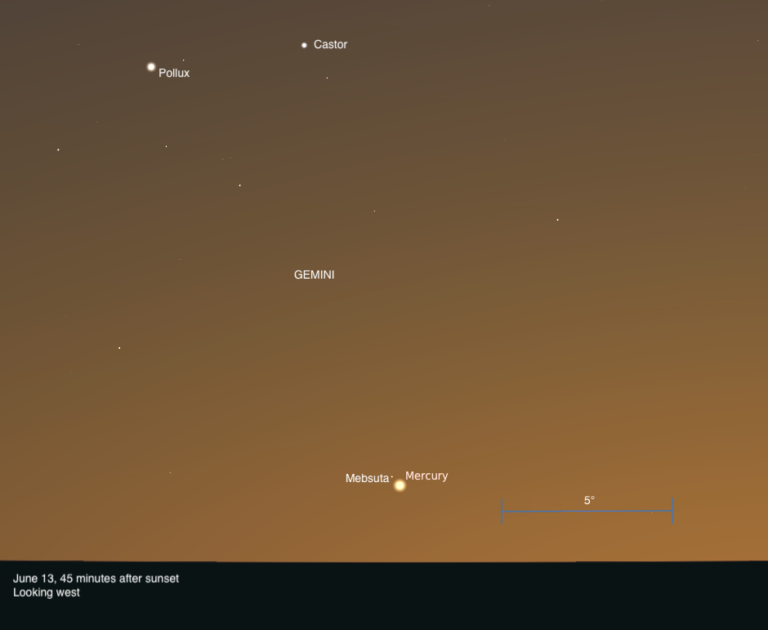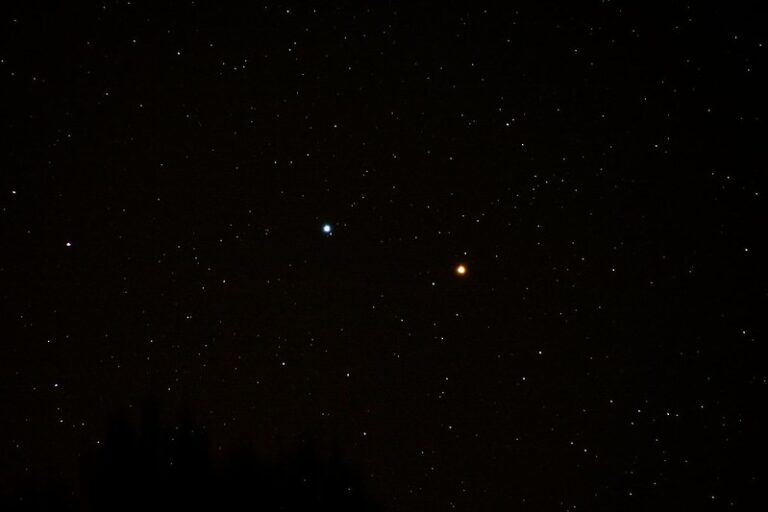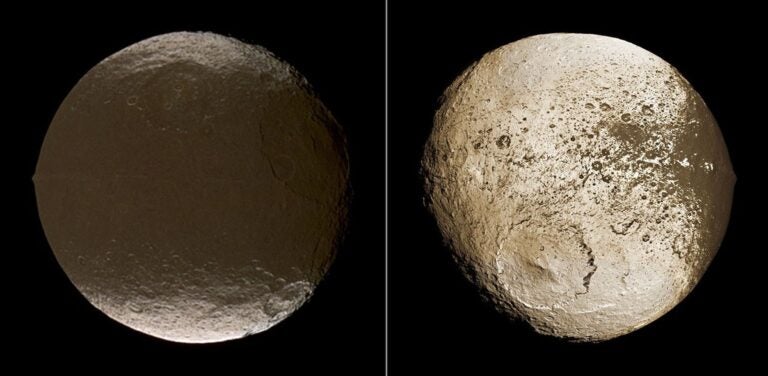On the evening of April 12, 2021, while waiting for an exposure of the Milky Way to finish, I looked up to enjoy the beauty of the night and was rewarded with a heavenly gift: A reddish streak descending from a point nearly overhead in the area of Sextans.
Slowly, gracefully, it slipped south-southeast toward Centaurus, its ruby head appearing like a bloody teardrop. Extending upward from the head was a roughly 10°-long scarlet tail, which kept its length and color throughout the fall. The red meteor swept through the stars at an elegant pace for about five seconds before its head flared to rival Sirius in brightness, its leading edge glowing dimly yellow, while spitting out red and orange “sparks.” Then, as soon as it flared, poof, the apparition vanished about 20° above the horizon. No smoky train was seen.
In the six decades I’ve been observing the sky, I had never seen such a rich red color in a meteor, nor such a slow and graceful spectacle against a dark starlit sky. As far as meteors go, its brightness was not magnificent and it did not blaze and burn like a fireball, but it was stunning nevertheless!
Historical accounts
A cursory search for reports of red meteor sightings turned up several cases sharing similar characteristics. For instance, in the October 1894 issue of Nature, British astronomer Alexander Stewart Herschel reported how a bright meteor crossed the eastern sky at about 7:54 p.m. While Herschel saw only the light it cast on the ground and in the sky, “like a momentary weak red flash of lightning,” a bystander close to him saw it “fairly well.” He told Herschel the “shooting-star” was “red in colour, and broke up at last with a red flash, leaving no train of light or of sparks along the track which it had traversed.”
In the March 1903 issue of Nature, J.E.C. Liddle of Basingstoke, U.K., reported seeing an “extremely slow” meteor that “dropped vertically downwards from Coma Berenices, its brilliancy keeping constant” during its five-second descent. Liddle estimated the meteor was equal to Sirius in brightness. He reported he initially mistook the meteor for Arcturus, “the resemblance being probably increased by its colour, which was reddish.” He adds that the meteor “left no trail.” He also thought it “appeared to ‘wobble,’ ” though he suspected “that may have been an illusion.”
The scarcity of such phenomena is alluded to in a report on meteor showers from 1870–1879, which appears in the 1880 Monthly Notices of the Royal Astronomical Society. In it, Henry Corder communicated that of the 5,800 meteors reported, only about 10 percent showed a distinct color, “the most usual being orange or red.”
Code red
One reason for the infrequent appearance of color in meteors is that they need to be bright enough to stimulate the eyes’ color-sensitive cone cells — but not so bright as to create strong contrast against the dark sky, which may wash color out. According to the American Meteor Society (AMS), meteors displaying colors in the blue to yellow part of the spectrum depend, in part, on the “dominant composition of a meteoroid … with certain elements displaying signature colors when vaporized.” Sodium, for instance, produces a bright yellow color; nickel emits green; and magnesium burns blue-white.
Red meteors, on the other hand, are most likely the result of glowing air plasma — molecules of atmospheric nitrogen (N2) and oxygen atoms (O) emitting a red light. According to the AMS, the meteor’s velocity also plays an important role, since “a higher level of kinetic energy will intensify certain colors compared to others.” And, “while fast meteors frequently have a blue color,” as the observations above suggest, slow meteors on the fainter end tend to show red or orange hues.
By the way, in Corder’s notes on individual showers, he says that over 20 percent of Taurid meteors are colored, “usually orange and red.” Taurid meteors can be seen any time during the months of September, October, and November — so keep watch.
Have you seen a red meteor? I’d be interested in hearing your tales, which you can send to sjomeara31@gmail.com.

